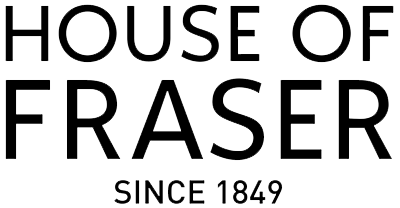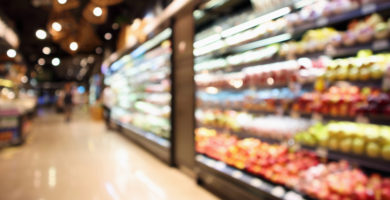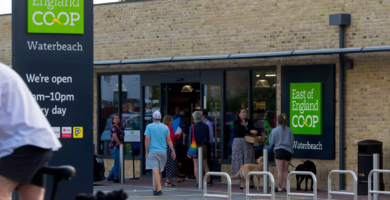After a thorough review by our analysts of the current trends resulting from the massive shift from physical to digital retail in 2020, we look at how this will advance the case of many technologies that have been promoted over the last five years, some with mixed success.
First we must agree what we are measuring as it is no longer enough to simply use the US and the leading European economies as benchmarks. As the Economist pointed out in its editorial and special report (4-8 Jan edition), retailers everywhere should now be looking not west but east to China as its consumers’ tastes and habits go global. The rise of Asia brings certain technologies to the fore, even as many pundits have chosen to drop them. Take Augmented Reality for instance.
AR is already widely embraced in China because of the way ecommerce platforms are structured. As the Economist points out, “their on-line shopping platforms now blend digital payments, group deals, social media, gaming, instant messaging, short-form videos and live-streaming celebrities.” In the West, these elements are provided by a range of specialists – Facebook, Google, Klarna, Salesforce, Whatsapp etc. and require heavy integration for each customer.
The Economist also takes the view that western consumers will not necessarily take part in live streaming that has become so much a part of Chinese ecommerce, as evidenced by Singles Day, the largest and most valuable on line shopping event in the world. It must be added as a footnote to this phenomenon that live streaming is taken for granted in countries where broadband is wide and always on, unlike say the UK.
However, if we add any type of video to the mix, then AR already has a future, not least the handful of retailers that enable customers to connect from home with in-store associates to get one to one product curation and sales assistance. The added value is that the store remains relevant while customers are confined to home.
The technologies, processes and partnerships that relate to our remaining five trends are listed as follows.
Last mile
Last mile slipped off many lists because it has been assumed to have been fixed, when that is not the case. Last mile continues to be a problem that many big brands and their big name fulfilment partners seem unable or unwilling to fix. Which is why the likes of ParcelLab which provides the connective tissue (technology + experience) between the parties is the type of company that sits behind a trend that is worth predicting. As startups emerged from the shadow of what was once the industry standard, Metapack, we will see more innovation this year from companies that recognise that the last mile is part of the whole experience that customers are seeking.
Cross border commerce
Another continuing trend is the growth of cross border commerce, which will see dramatic pick up as the UK leaves the EU. Cross-border online shopping is predicted to account for 17% of total ecommerce sales in 2023 according to eShopWorld and this was before the 2020 pandemic, during which Cross border eCommerce grew globally for eShopWorld by 109% YOY during the first half of the month of May alone.
Social commerce
Staying with the theme of making predictions based on actual consumer demand, it is reasonable to say that social commerce will grow in 2021, but not by the crazy rates some are predicting. Allowing for my own preferences in the male, pale and stale camp, the younger people that are supposed to be the frontrunners, will continue to use social for browsing and communicating, preferring to actual transact through primary web sites. Brands need a strategy for social commerce but it is too early to shift focus from their owned web properties.
Sustainability
It has been suggested that there is a tipping point around sustainability because it serves those that want to make bold and definitive statements about it. Nonsense. Yes, brands and retailers will need to work harder to not just be sustainable but show HOW, but they are all at different stages of the journey, either held back by a lack of joined up processes, or moving forward because they have always been a responsible business.
What I think we will see this year is pressure building on traditional brands to demonstrate their sustainability in the face of newer brands such as allbirds whose entire product range is built using sustainable materials and methods. The remaining traces of economic imperialism that still imbue many mainstream brands’ sourcing and manufacturing approach will start to fade in the face of media and consumer activism.
And according to Forrester, shoppers are increasingly evaluating products and brands based on a company’s ethics and values, with 41% of US consumers actively seeking to buy from a company associated with social, environmental, and political ideals.
Location
Landlords suffering the 2020 rent collapse resulting from closed stores will not want to hear the news that there is a growing band of brands that can attract consumers to their stores wherever they are located. If customers are prepared to queue, then they are unlikely to be worried about the trip they had to take to get there. And many retailers returning to the high street will be rethinking not just location but store numbers and layout. And they will be adding a lot more technology that will enable them to measure traffic, track behaviour and schedule staff accordingly. For instance, Sensormatic has made a number of acquisitions in the last few years, not least ShopperTrak and brought everything together in a story that covers full store monitoring all the way from shrink and safety management to traffic and behavioural analysis.
While this focus on stores may seem hollow while many remain closed, the truth is most consumers want to get back into physical spaces and retailers will be much more closely monitoring their behaviour so that they can build the store of the future to serve a customer that spends possibly half to three quarters of their retail life on line.
Conclusion
The best kind of trends articles are those that change minds, not merely share information. I urge everyone to read widely and not rely on a single source, however seemingly authoritative. And please share your insights on LinkedIn because 2020 broke almost all the linear growth predictions. 2021 is going to play out in surprising and unpredictable ways so switch your brain to reset and start listening to new sources of insight.

















